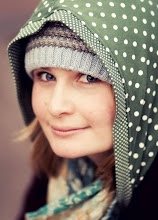Jodhpur
Once again, only the best highlights:
We took a half-day tour of the Bishnoi villages outside of Jodphur, where the original “Tree Huggers” once lived. Bishnoi translates to “Twenty-niners,” for the 29 rules to be followed by the people according to lord Vishnu. They highly value nature, especially animals and the local trees. When the 1730 Jodhpur Maharaja decided he needed to fell their trees to construct a new palace, a massacre of 363 Bishnois occurred, as they hugged the trees and accepted beheading as a sacrifice for the sacred wildlife.
Jodhpur Fort, overlooking the beautiful Blue City (homes painted in indigo to protect from the heat and the insects) introduced us to the beauty of Rajasthani architecture. Swooping window awnings and carved latticed walls to allow windflow, and to “allow women to look outside without the lusty stares of men.” Hmm. Gorgeous nonetheless.
A young boy approached us while we visited the blue city, and told us all about how Obama is good and Bush was very bad. His name was Viky and he took us to into his home up on a hill, and introduced us to every cousin and brother and sister. His mother made us chai, and his sisters complemented just about every piece of jewelry I was wearing.
As Rebecca and I wandered around the clock tower bazaar, we had the chance to glimpse three men playing trumpets late at night in their tiny music shop, and old women singing religious songs in their small temple. It was great to explore Jodhpur at night, to see all of its hidden surprises.
Recycled textiles are a wonderful invention by handicraftsmen all over Jodhpur and Jaipur. I found a small shop in the bazaar that featured hundreds of different cloths made from parts of women’s salwars and sarees from the villages. The village women cut up their old clothing, match the colors, and patch them together. The colors and designs are amazing, and it is so cool to imagine that all different people wore bits of a single textile for years of their life.
Bikaner
We took a two-day camel trek out of Bikaner. Laura had the funniest camel, who either farted or made a mating call every 30 seconds. The mating call consisted of blowing the inside of its throat out its mouth like a second tongue, and gurgling. Very attractive.
It was wonderful to be away from all people for a couple of days, in a country where solitude is rare. The stars were glorious at night, and I loved following tiny animal tracks in the sand. I saw giant lizards, antelopes, foxes, and vultures, and as we made our way through a small village on the way to the desert, all of the children chased our camel caravan shouting “Ta Ta!”
Jaipur
Lassiwala had the absolute hands down best lassies I have ever had. They were served in honey-comb shaped pottery, and tasted like heaven.
The pink city itself was beautiful. By law, every shop must be painted pink. It’s great.
We made good friends with an autorickshaw driver, who at one point took us to his friend’s Italian restaurant, where we were served beer from a teapot (unlicensed to serve alchy) and he told us about his life as an autodriver. His parents couldn’t afford to send him to school, as he was the youngest of 9 children. He can’t read or write, which impedes him from becoming a guide (his aspiration). He doesn’t want to get married, because he commiserates with Bob Marley by saying “No woman no cry.”
He let Laura drive the rickshaw past the lake palace. I considered trying, but I thought I would kill us all.
I later met a girl on the street in Jaipur who designs jewelry in her father’s store. She took me into her local temple on her way to work.
At one point, nearing the end of our journey, we laid down in the hotel bed to rest, and turned on the TV. On came the Amazing Race, and the contestants were headed straight to Jaipur! Go figure! It was hilarious to watch them muddle their way through Indian transportation to all of the sites we had just visited that day, and to see a newcomer's reaction to India compared to our accustomed view.
Overall, my trip put my faith in people on a bit of a roller coaster ride. Sometimes I felt like all friendship here comes with a price. Other times, I truly believed in the genuine friendliness of the people I was with. It all comes down to taking every new interaction as a fresh start, and seeing what happens. Not everyone is out to get paid, although it so often feels that way.
